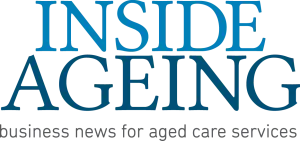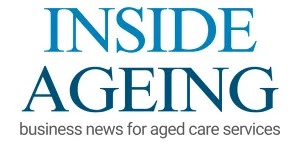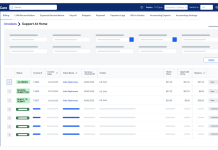This quarter’s survey, sponsored by Catalyst Research and Inside Ageing, garnered 52 responses primarily from Executive Management and Marketing/Business Development executives. These respondents represented various sectors, including home care, retirement living, residential aged care, NDIS, and allied health services.
Industry challenges
Staffing remains the number one challenge, cited by eight in ten ahead of compliance, revenue and change management. Staffing concerns remain prominent though the intensity of this issue and compliance costs have waned somewhat.
“It has started to improve, largely with borders opening and some players leaving the market, however, there is still a significant gap in skilled workers, particularly RNs and in regional areas especially”
Almost half cite change management as a key challenge, a higher percentage than before.
“The hidden cost of the reform agenda is significant and diverting staff time (clinical resources) away from care as well as increasing staff stress/burnout”
“Staff are working short; illnesses are still in communities but more importantly the level of change to implement and manage has been extraordinary”
Revenue shortfalls remain a concern for every second respondent.
“Increased financial costs yet no real increase in revenue”
“The additional compliance and reporting burdens with no funding to cover it and capped pricing with no ability to raise prices.
Impact of pay increase on staffing
Almost half believe the 15% pay rise has been a big help or helped somewhat in attracting/ retaining workers. One in four say it makes no difference and a similar number say too early to tell.
This is clearly a positive for the industry, though potentially adding to inflationary pressures.
“It costs more to care for residents than funding; inflation is on the increase but we cannot increase the costs we just have to wear it; cost of RNs is enormous and their skills are poor”
Staffing challenge responses
Three-quarters indicate they are using new strategies. At least half are increasing recruitment activities and staff retention initiatives.
“The latest marketing campaign focused on financial incentives for staff who refer friends and are successful in their recruitment. This provided a strong uplift in applications and successful candidates”.
“Recruitment bonuses for hard-to-fill roles. More student placements. Additional employee benefits”.
One in three reports investing in new technologies, though not all see a short-term benefit.
“We use different recruitment platforms some within software applications for client management”
“They invest in expensive tech solutions that promise the world but have a steep learning curve or don’t address the core problems these businesses face”.
The Department of Health and Aged Care (DHAC) is helping consumers but not shining for providers
Three-quarters feel the DHAC drives improved aged care for consumers. Half believe DHAC offers accessible information for consumers. A similar number see compliance changes as being a positive for consumers. This means half do not agree with these statements.
“Online portals are hard to navigate and find information – for consumers and providers alike.”
“They have been consistently poor on these points and ensuring OPAN and COTA have the final word. They clearly do not understand how this business works. Only when EY did consultation has it improved.”
Providers are critical of how DHAC engages and implements change.
“DHAC has very limited understanding of the sector from an on-the-ground perspective. Their impact in staffing is diabolical and the changes being rolled out are negatively impacting care”.
“They manage change poorly; poor consultation with industry. Information is terrible for consumers.”
“They are out of touch with providers, our regulator (ACQSC) and residents”.
“Communication is often tokenistic and after government decisions have been made. Consultative panels and webinars do not always appear to be heard in the final decision-making process.”
Continuum of care (CoC) offers on the increase
Only one in ten say they are staying focused on a specialist offer. Almost half have had a CoC offer for a number of years. The other half is either increasing the emphasis on or moving towards CoC.
Examples include Community Living businesses expanding into Home Care, RAC providers growing their Respite Care offer and Home Care providers enhancing their Allied Health capacity. Diversification can be a path to multiple income streams and more efficient resource allocation.
Data Sharing
Seven in ten express an interest in sharing data. Over half would value the ability to compare with other organisations on marketing spend by category. At least a third seek points of reference for the structure of their marketing department and changes in spending quarter-by-quarter. Three in ten would like to compare the number of marketers employed. Other suggestions include:
“Brand metrics – funnel stuff”
“Marketing strategies and success rates”
“Brand awareness” [editor note: already accessible subscribers of The Catalyst Report]
“Average cost per lead per service”
“Staff turnover”
“CHSP to HCP conversions”
Other comments were encouraging…
“This would be advantageous, especially given home care NFP and CHSP-only providers have not historically pursued marketing to any great length. Providers’ ability to build sophistication in this space will be critical to market supply”.
Though several voiced caution…
“Extremely valuable, but would need to work hard to ensure clear apples for apple comparisons”
“This level of data/information would be valuable. However, there are so many administrative demands placed on providers and workers that any such process needs to not create more work”
Catalyst Research and Inside Ageing will continue to explore the viability of collecting and sharing marketing statistics. Such an initiative would require large-scale participation to be credible and sustainable.
The full report is priced at $1,800 plus GST and is available for purchase. To obtain a copy: editor@insideageing.com.au – upon payment a copy will be emailed to you by Catalyst Research.










